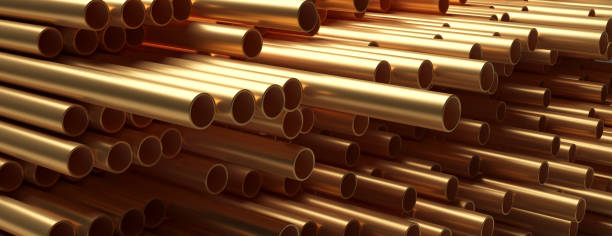
When shopping for copper and brass tubes, you’ll notice that the same products are called by different names in different places. You may have wondered whether the two types of tubes are interchangeable, or if they’re the same type of product but just renamed depending on where you purchase them. The fact is that they’re two entirely different materials, with unique properties and applications, so it’s important to understand the difference before you make your next tube purchase. We’ll explain the main differences between copper and brass tube suppliers below, so you can shop confidently and get exactly what you need every time.
A little bit about copper
Copper is a beautiful metal that has been prized for its beauty for thousands of years. It has also been valued for its conductivity, which makes it great for plumbing, wiring, etc. In recent years, we have started to use more plastics because they are cheaper. However, many plastic pipes need to be replaced after 50-100 years of use. Since copper doesn’t have as many chemicals that can seep into water or cause corrosion in your system compared to other metals (like steel), many people prefer copper over other materials like plastics or steel when doing projects around their house.
A little bit about brass
Brass tubes have properties similar to copper tube suppliers. Brass, like copper, has a malleable quality which makes it easy to bend or shape into a tube; however, brass does not hold its shape, as well as copper, does. Due to their malleable properties, brass tubes are more useful for applications where flexibility is important such as in plumbing fixtures. Compared to stainless steel tubing, brass tubes may be more vulnerable to corrosion from exposure to moisture but less likely than carbon steel tubing. Copper and brass also can be joined together using soldering techniques if you plan on creating your own custom parts or pieces from these materials. Some of the most popular brass fittings that we stock include
How are they used?
Copper and brass tubes are primarily used in mechanical applications. In fact, all sorts of machines rely on the tubing to carry out their basic functions. So, these tubes may be found in any machine that requires mechanical movement. Some examples include piping systems (like those used in plumbing), automotive parts, heating/cooling systems, and more. However, you should also keep in mind that there are other uses for copper tubing as well. For example, you can use it to make your own electronics projects or even create a home bar! Still curious about what else these tubes can do? You might want to check out our related posts below for some ideas on how you can use them around your home or office!
Where do you get them from?
Copper and brass tubes are widely available. You can find copper tubes at hardware stores, home improvement shops, craft stores, or online. You can find brass tubes online as well. The copper tube is also known as black tube or EMT while the brass tube is also known as white tube or IPS (iron pipe size). Many plumbing supply shops carry these tubes but they may call them something else. If you have a local metal shop that sells tubing chances are they’ll know what you’re talking about if you ask for copper or brass pipe. If not, just bring in your measurements and tell them which kind of metal it needs to be made out of so they can let you know what their prices are for each type of metal.
The properties of each metal
Copper is a ductile metal, meaning it can be drawn into thin wires. Copper also conducts heat very well—it’s one of only a few metals (along with silver, aluminum, and gold) that are good conductors of both heat and electricity. It doesn’t corrode easily (though it will oxidize over time), which makes it perfect for all sorts of industrial applications where corrosion resistance is important. Copper tubing has many different applications: water supply lines for homes or businesses; brake, oil, transmission, and cooling lines in vehicles; radiators; distilling equipment; heating elements in toasters or coffee makers; lightning rods on buildings; kettles used to boil liquids in laboratories or educational settings (such as high schools); etc.
The uses of each metal
Copper is a conductor of heat and electricity, while brass is used primarily for decoration. That means that copper will be great for plumbing applications like water lines, while brass tubes would be more appropriate for light fixtures. Both can also be used as wire covering or to protect wires during an electrical installation. Copper is also far less expensive than brass, so if you are looking for a material that does both jobs it will almost always end up being made from copper. For instance, Cu-Wiredco offers a thin-walled tube with a wire inside which can be used in any electrical application from power tools to computers. It’s easy to install, easy to bend, and incredibly durable!


